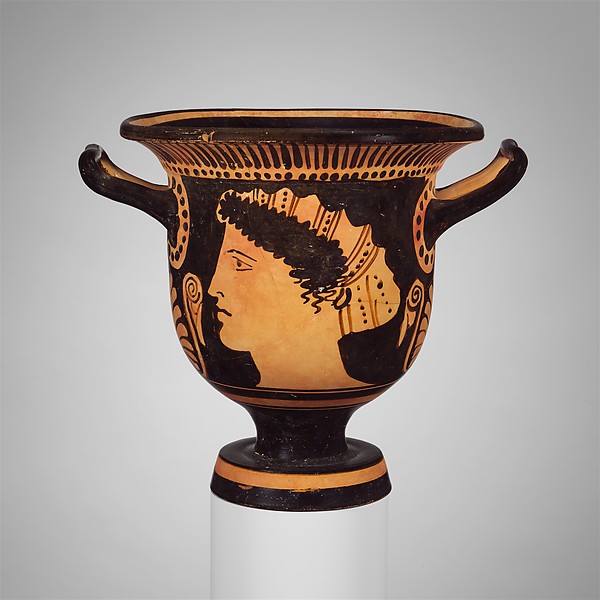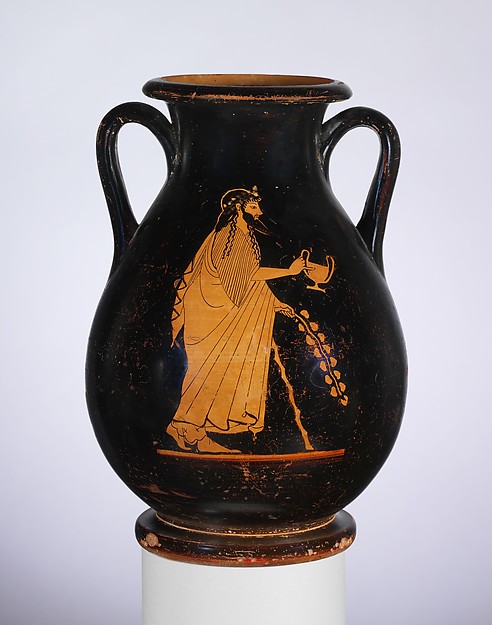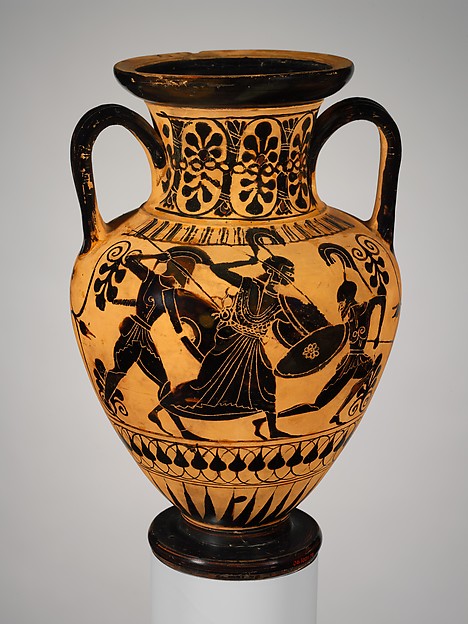First things first; I have a design up on Threadless to be scored for the "Dysfunctional Families" design challenge. Rather mysteriously I decided the thing to do would be to make a Greek mythology joke -- not, I would argue, a particularly obscure one, but still, probably less accessible overall than a joke about, say, the Kardashians. Whatever.
Here is my design! And here is a link where you can go give it a nice score on Threadless! (You need a Threadless account to vote.)
Here is my design! And here is a link where you can go give it a nice score on Threadless! (You need a Threadless account to vote.)

Now, let me justify this business.
My roommate took a "Women in the Ancient World" or somesuch class when we were juniors or seniors, and she would come home positively crowing about the murders of Medea or Clytemnestra (not that we have macabre senses of humor or anything.) I always particularly enjoyed seeing Agamemnon get his comeuppance, because he always seemed particularly like an ass (particularly after that television miniseries we watched in high school World Lit with Rufus Sewell as Agamemnon, cough). Not only that, there were enough murders in that story to make a truly ridiculous graphic. (Agamemnon kills his daughter Iphigenia in a ritual sacrifice for favorable winds when he's taking his army to attack Troy; his wife, Clytemnestra, avenges her daughter by strangling/stabbing him in the bath; and finally, their son, Orestes, kills her to pay back his father's death.)
The idea of having all four pagan folk together murdering each other in a chain reaction, decked out in anachronistic holiday swag (though you'll notice that the tree has a lightning bolt on top and dolphins and bulls hung from the branches) struck me as quite humorous.
My roommate took a "Women in the Ancient World" or somesuch class when we were juniors or seniors, and she would come home positively crowing about the murders of Medea or Clytemnestra (not that we have macabre senses of humor or anything.) I always particularly enjoyed seeing Agamemnon get his comeuppance, because he always seemed particularly like an ass (particularly after that television miniseries we watched in high school World Lit with Rufus Sewell as Agamemnon, cough). Not only that, there were enough murders in that story to make a truly ridiculous graphic. (Agamemnon kills his daughter Iphigenia in a ritual sacrifice for favorable winds when he's taking his army to attack Troy; his wife, Clytemnestra, avenges her daughter by strangling/stabbing him in the bath; and finally, their son, Orestes, kills her to pay back his father's death.)
The idea of having all four pagan folk together murdering each other in a chain reaction, decked out in anachronistic holiday swag (though you'll notice that the tree has a lightning bolt on top and dolphins and bulls hung from the branches) struck me as quite humorous.
The nice thing about pulling a story from a culture with a strong tradition of graphic representation is that it makes deciding how to draw it much simpler. I wanted to mimic the sort of figures one sees drawn on large Greek vessels, of which the Boston MFA has a large and admirable (if occasionally risque) collection.
I started poking around in their online archives for ideas. (I used links to their websites for the images, so hopefully they don't break in the near future. :P) (Whoops -- editorial note -- the links on the MFA items lead back to the slideshow these pieces are found in, not the specific piece. It's not a very long slideshow though so you should be able to find them.)
I started poking around in their online archives for ideas. (I used links to their websites for the images, so hopefully they don't break in the near future. :P) (Whoops -- editorial note -- the links on the MFA items lead back to the slideshow these pieces are found in, not the specific piece. It's not a very long slideshow though so you should be able to find them.)
This one is a bowl for mixing wine and water from Athens (called a bell krater, I think?), ca. 470 B.C. The figures represented are Diana and Achteon; the myth goes that he saw her bathing, so she turned him into a stag to be ripped apart by his own dogs. I more or less copied her dress for Iphigenia (minus the skin of a -- cat? -- around her neck.) Click through on this link to look at a bigger picture of Diana's hands -- they're very gracefully shaped, and I tried (and perhaps failed) to do justice to that in my design.
Probably if I were to change this design, I'd make all of their features a little smaller to keep closer to the source material; my is (somewhat deliberately) a bit more cartoonish.
Probably if I were to change this design, I'd make all of their features a little smaller to keep closer to the source material; my is (somewhat deliberately) a bit more cartoonish.
I attempted to use the floral pattern from this pot as a border, but it was too busy and rather too cheerful for what I was going for. Also considered using white as well as red and black in my color scheme, but given that I was already introducing red and green (which I've never seen on this sort of pot), I thought I should leave well enough alone.
 From this dish, a drinking cup or kylix, (made about 510-500 B.C.) I pulled some ideas about how to depict musculature (i.e. the naked Agamemnon in the bath) and feet. I couldn't quite bring myself to do an eye in the wrong perspective (i.e. from the front even though the face is in profile), even though that's a common characteristic of early Greek pottery painting.
From this dish, a drinking cup or kylix, (made about 510-500 B.C.) I pulled some ideas about how to depict musculature (i.e. the naked Agamemnon in the bath) and feet. I couldn't quite bring myself to do an eye in the wrong perspective (i.e. from the front even though the face is in profile), even though that's a common characteristic of early Greek pottery painting.
 Doubtless I should have just looked up paintings of actual Greek queens, but instead I chose to roughly interpret the dress that this status of Athena is wearing for Clytemnestra. Yay draped fabric! (Alas I probably shouldn't have mixed my eras, since this is from the 2nd or 3rd century A.D., and actually a Roman interpretation of what Athena would have worn. Whoops.)
Doubtless I should have just looked up paintings of actual Greek queens, but instead I chose to roughly interpret the dress that this status of Athena is wearing for Clytemnestra. Yay draped fabric! (Alas I probably shouldn't have mixed my eras, since this is from the 2nd or 3rd century A.D., and actually a Roman interpretation of what Athena would have worn. Whoops.)

After looking through the MFA's archives for a while I remembered that the Met also has an excellent site with an easily searchable database. I referenced the pot above (also found around Athens in the late 5th century B.C.) for Clytemnestra's hair and profile shape.


I took Orestes' garments from this pot, an amphora from around 525-500 B.C. (Also decided to go with this sort of black-on-red figure rather than the other way around.) Originally he was going to have a helmet like this under his arm or dangling from his hand, too, but it was too cluttered and I wasn't sure I could make it distinguishable in the position he's standing in.
Right -- so -- don't forget to go to Threadless and score my design! Thanks very much!
Right -- so -- don't forget to go to Threadless and score my design! Thanks very much!

No comments:
Post a Comment